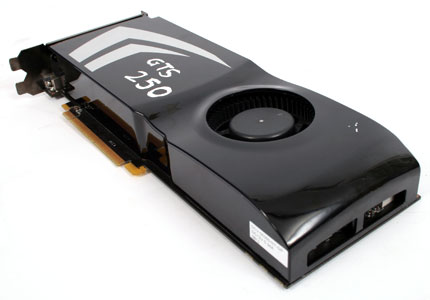
Manufacturing Problems
Consumer dissatisfaction has been something of a theme for Nvidia over the past eighteen months or so – at least where bit-tech readers are concerned. Many of bit-tech’s readers have been waiting for Nvidia to release midrange GT200-based products since the day the GeForce GTX 200 series was introduced, but they haven’t arrived on the desktop even today.Instead, the company chose to rebrand many of its past products, effectively re-announcing GPUs that enthusiasts had already purchased – just at a lower price point. We ended up with a situation where every midrange part with a retail price below £150 was based on G92 technology, which dates from November 2007. Obviously, the market for those parts has slowly dwindled as the price of the GeForce GTX 260 has fallen, but they’re still very much a part of Nvidia’s current line up.
In many respects, we think Nvidia aimed too high with its GT200 GPU and it became an almost impossible task to cost the chip down effectively to hit more mainstream prices. In fact, it wasn’t until June this year – almost 12 months after the initial GeForce GTX 280 release – that Nvidia announced a number of mainstream GeForce 200M series graphics chips for laptops.

Nvidia's GeForce GTS 250 TipeXXX edtition... otherwise known as the 9800 GTX+
Virtually all of Nvidia’s major OEM partners have announced (some quicker than others) that there are a number of their laptop designs that have suffered higher than normal failure rates. Initially, Nvidia said that a ‘one-time’ charge of $200 million would be enough to cover the problems, but in this year’s second quarter financial results, announced on 6 August, Nvidia said that it had added another $119.1 million into the pot.
This presumably covered the cost of Sony’s admission that 14 models in its Vaio laptop range featuring Nvidia graphics were faulty – so much for the one-time charge, eh? It’s just a shame that it took Sony all of 13 months to acknowledge that there was a problem. It follows on from Apple, Dell and HP all announcing that there are problems in virtually every Nvidia-based laptop they sell.
Nvidia’s partners extended warranties and offered BIOS ‘fixes’ that turned up the system fan to reduce GPU temperatures, which helped somewhat, but it still left consumers with a bad taste in their mouths. Confidence in Nvidia’s laptop products effectively plummeted and it’s fair to say that they haven’t fully recovered – many consumers are playing a game of ‘wait and see’ before investing in another Nvidia-based laptop.

All of Apple's recent MacBooks feature Nvidia graphics and Apple has admitted that there are problems with some of them.
Further evidence of this came as AMD announced that it had a market share gain of 36.5 per cent in the second quarter of 2009 and had a discrete ATI Mobility Radeon 4000 series GPU in 53 per cent of the laptops with discrete graphics shipped in that period. According to AMD, this represented an 87.27 per cent increase in sales in the first half of the year.
We’re only seeing the effects of this now because it takes a long time for design wins to come through, but it’s clear that confidence in Nvidia’s laptop GPUs has plummeted – both with consumers and with OEMs – since it announced the problems.

MSI MPG Velox 100R Chassis Review
October 14 2021 | 15:04








Want to comment? Please log in.